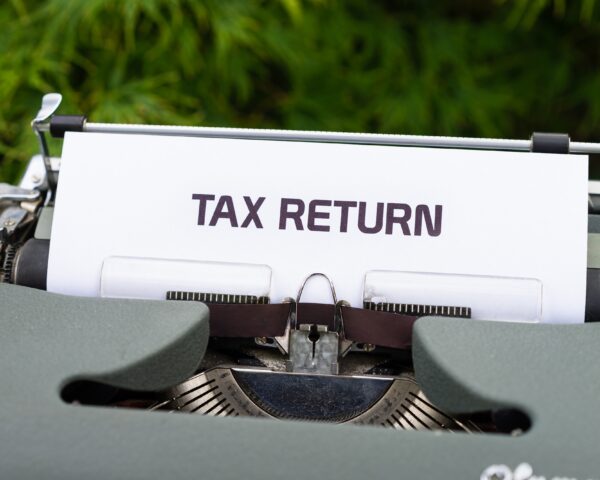Are you working from home during coronavirus? Freelancers and contractors locked out of their client’s offices could be saving tax.
In this blog we’ll cover the tax principles, and how to calculate and put in place a home office claim.
But, what is a home office claim?
A home office claim is a charge from yourself to your company for the use of your home as an office. It works the same as renting an office, except, in this case, you are the landlord and the tenant.
There is potential for fiddling the numbers to create tax savings so claims must be well planned and backed-up. If you’re audited HMRC will look into these claims so the charges must be “at an arm’s length.”
Don’t let that put you off though, these are legitimate business expenses and we’ll show you how to get the most out of your claim.
Principles, principles, principles
HMRC state – for an expense to be deductible it must be “wholly and exclusively” incurred for business purposes. The question we ask is “are these truly business expenses?” and “can I prove it?”
If an expense has both a private and business element, then only the business element counts. This applies to claiming the business part of your own home.
How to make a home office claim
There are two methods for claiming home office expenses:
1. The HMRC flat rate method
2. The actual costs method
The flat rate method
This is where HMRC provides an amount to claim, based on the number of hours you work from home. It’s a simple, risk-free method and you won’t need an accountant to work this out. You can read about the rates here.
Using it will be quicker but you’re likely to save less tax as the rates are low.
The actual costs method
Ready to save some tax? We’ll use the formula below to make the claim:
Home office rate x applicable costs = home office expense claim
The home office rate is the size, or use, of the home office in proportion to the total size, or use, of the home.
Applicable costs are the costs incurred to maintain your home that make it possible for you to carryout work from there.
Purchases of equipment and furniture which are necessary for your work will also be claimable. As these are one-off expenses they should not be included in your applicable costs, they should be claimed directly as business expenses in your company.
We’ll look first at the methods used to determine a fair home office rate.
The goal of these methods is to agree a fair proportion that the office makes up of the total household. There are no rules, so we need to use our judgement based on the unique circumstances we all have.
We tend to use one of three methods:
1. Based on the total rooms in your home
2. Based on the office’s area of your total home
3. The time you spend working from home
Based on the total rooms in your home
This is where you have a single room which is exclusively or predominantly used as an office.
You would take that room (1) and divide it by the total rooms in your home to give a rate.
Let’s say you had a house with five rooms where a single room is used only as an office. You would take the single room and divide by five total rooms to give a home office rate of 0.2 (1/5).
Based on the office size versus the rest of the house
Ready to get your floor plans out? This method bases the home office rate on the square footage of your home.
Let’s say the total square footage of your home is 200 sqm, and the office is 20 sqm of this; here the home office rate would be 0.10. This is the space the office takes up as a proportion of your total home.
The time you spend working from home
What about those of us working from the kitchen table – you’re covered too. We’re London based, and fully aware not everyone has a whole room dedicated as an office.
A fair way to calculate your home office rate using this method, is basing it on the hours you spend working at home.
Let’s say you’re working at home 40 hours a week. We’ll take those 40 hours as a proportion of the total week and calculate the home office rate.
40 hours working at home / 168 total hours a week = 0.238
Takeaways
Choosing an appropriate rate is an important step. You must use a rate that’s fair given your circumstances. The calculation methods are straightforward – the devil is in the detail.
Applicable Costs
These are the costs which we multiply the home office rate by and include:
- Rent
- mortgage interest (not principal)
- council tax
- internet
- electricity
- cleaning
- security
There is no definitive list of what is allowable. Each case needs consideration based on its circumstances. The principles remain though – the expenses must be incurred for business purposes.
Home office claim example
Ray works as a freelance designer from his one-bedroom apartment. His applicable costs tally to £800 a month.
Ray works from his kitchen table during the day and estimates he spends 40 hours a week working. This gives him a home office rate of 23.8. (40 working hours / 168 total hours).
A fair home office claim for Ray is going to be:
0.238 home office rate x £800 applicable costs = £190.40 a month.
How do I formalise my home office claim?
You need to sign a contract between yourself as the ‘landlord’, and your company as the ‘tenant’. If there is no agreement, then HMRC can consider the rent payments you receive as extra salary. If they did, PAYE and national insurance would be due, and this would be a bad outcome.
Putting a rental agreement in place allows the company to claim the rent as a tax deduction.
The rental agreement needs to consider the following:
- The rental charge
- periodic reviews of the rent. This should happen annually or on a trigger event, like moving to a new flat
- The term agreed
- A termination clause
How much tax can I actually save by doing this?
Let’s go back to our example from earlier. Ray has calculated a home office expense of £190.40 a month.
Annually that’s a total expense of £2,284.80, meaning he’ll save £434.11 in corporation tax. (at a tax rate of 19%)
The savings don’t end there though. He’ll also be saving personal tax by getting reimbursed for the home office expense tax-free. The total savings depend on what tax bracket Ray is in. Higher-level taxpayers will receive more savings.
We estimate tax savings of £900-£1,000 for someone earning £80,000 who claims a £2,000 home office claim.
What are the risks?
As always in business, there are risks that you need to manage. But, if you follow the approach outlined, can support your claim and always keep ‘fairness’ at the heart of the calculation, you can manage those risks.
– If you own your home then be careful when claiming a room exclusively as a home office. That room won’t be deemed for personal use and you’ll lose your tax-free capital gain for its share when you sell.
– If you rent then you’ll need to check your contract and speak with your landlord to ensure you can sub-lease part of the property.
– HMRC will want back-up and evidence for the home office claim so it needs to be documented and supportable.
– If your home office isn’t used only for your business purposes then the rate should be reduced by the personal use part.
An effective way of keeping track of your activity is to log the hours you work from home. This helps as back-up whether you are claiming a rate based on hours or office size.
Summary
The home office claim is a great way to pay the right amount of tax. By not doing so, you are inflating your taxable profits and missing out on savings.
The calculation process isn’t difficult and should follow logical methods. The key is in pulling together the right inputs and ensuring they are supportable.
The key question to ask yourself at every stage is: “are these expenses for business purposes”? And, “can I prove it”?









